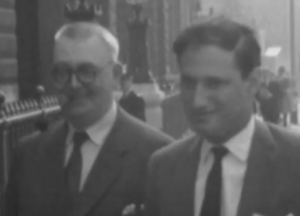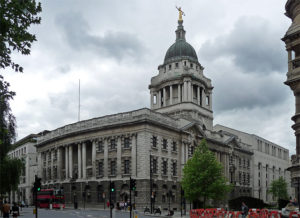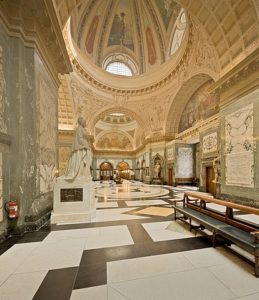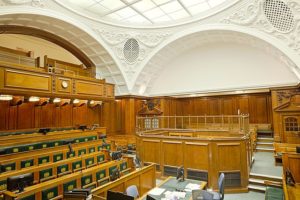In 1961, an unemployed cab driver, Kempton Bunton, pulled off one of the most remarkable art thefts of the 20th century. Or did he?

Although Bunton was initially only charged with one count of larceny, the prosecution submitted an indictment that was much more severe. He was now charged with two counts of larceny, one for the painting, one for the frame, that was never recovered, and one charge of menacing for submitting letters to Lord Robbins demanding money. In addition, he was charged with creating a public nuisance by depriving citizens of their right to see the painting and with additional menacing, implying the potential threat to permanently keep or even destroy the artwork in his letter to the Mirrror. Breaking out the frame and the portrait theft charges separately and prosecuting Bunton for inconveniencing the public, certainly seemed like a case of overcharging, however the prosecution might have been concerned about a jury’s reaction to an oddball like Bunton, especially where charity was supposedly involved and they may have wished to underline the gravity of the offence.

On November 4, 1965, in the Central Criminal Court, Kempton Bunton’s trial began before Judge Carl Aarvold, a distinguished jurist eventually knighted for his public service. The court was known by its nickname, Old Bailey, the site of numerous famous and sensational court cases involving many famous defendants. Its marble floors, ornate décor and fine wooden walls evoked the image of a British courtroom popularized throughout the world in film and television.

Although Bunton was initially only charged with one count of larceny, the prosecution submitted an indictment that was much more severe. He was now charged with two counts of larceny, one for the painting, one for the frame, that was never recovered, and one charge of menacing for submitting letters to Lord Robbins demanding money. In addition, he was charged with creating a public nuisance by depriving citizens of their right to see the painting and with additional menacing, implying the potential threat to permanently keep or even destroy the artwork in his letter to the Mirrror. Breaking out the frame and the portrait theft charges separately and prosecuting Bunton for inconveniencing the public, certainly seemed like a case of overcharging, however the prosecution might have been concerned about a jury’s reaction to an oddball like Bunton, especially where charity was supposedly involved and they may have wished to underline the gravity of the offence.

Kempton Bunton had a spontaneous manner of testifying that incorporated unintentionally hilarious comments that convulsed the entire courtroom, including the judge, with raucous laughter. When asked if he had ever told his wife about the theft, Bunton replied emphatically and without hesitation,
“No, then the whole world would know, if I told her.”
When Cussen attempted to challenge Bunton’s assertion that he always intended to return the Goya, Bunton was practically exasperated,
“Absolutely, it was no good to me otherwise. I wouldn’t hang it in my own kitchen if it was my own picture,” the comment again bringing down the house, an unemployed cab driver deriding one of the art world’s most esteemed paintings. Again and again, Bunton’s oddball demeanor and ability to stonewall the prosecution not allowing Cussen to portray him in a diabolical light.
Podcast: Play in new window | Download
Subscribe: RSS
